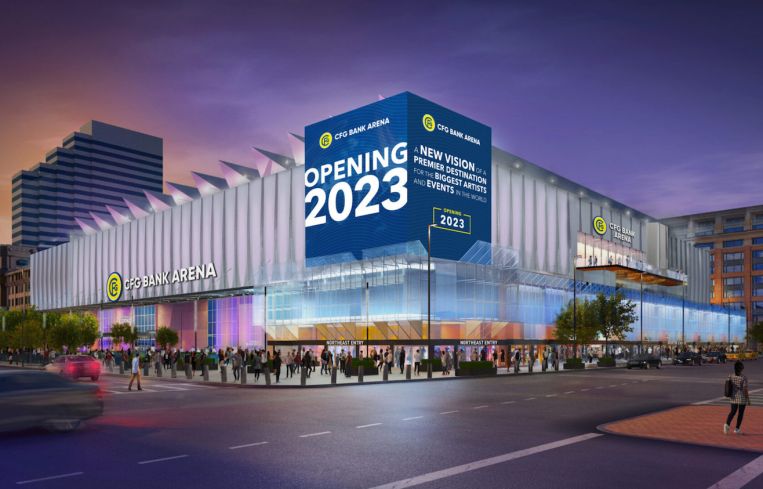Baltimore’s CFG Bank Arena to Reopen With Sustainable Redesign
By Keith Loria February 16, 2023 6:08 pm
reprints
CFG Bank Arena, the Baltimore venue that has been closed for renovations since March, is set to reopen next week for the Central Intercollegiate Athletic Association’s men’s and women’s basketball tournaments.
Oak View Group initiated a $200 million renovation of Baltimore Arena last year, with British firm Buro Happold serving as the engineering consultant behind the project.
The redesign was completed this week, with a sustainable component that the company noted dramatically reduced the arena’s carbon footprint.
The company utilized its life-cycle assessment (LCA) toolkit, part of the firm’s Buildings and Habitats object Model, known as BHoM, to define and quantify the most sustainable path for revitalizing the arena, according to Luke Lombardi, a structural engineer and senior sustainability consultant at Buro Happold.
BHoM is an open-source, data-driven platform that allows design professionals to measure embodied carbon in all elements throughout building design and construction. It draws on information provided by sources such as Revit’s building modeling software and the Embodied Carbon Construction Calculator, known as EC3.
“The toolkit is able to pull data from various sources,” Lombardi told Commercial Observer. “For the renovation of CFG Arena, we extracted material information from the Revit building model and then referenced the EC3 environmental database to estimate the project’s carbon footprint.”
Located at 201 West Baltimore Street, the renovated 14,000-seat arena will see a decrease in the amount of embodied carbon from structural materials by 95 percent compared to comparable new construction, he added.
Renovations completed in the arena included new suites, refurbished concourses, upgraded concessions, the addition of LED lighting, low-flow and waterless fixtures, and other sustainable measures.
It’s not just the specific measures, but the restoration itself, that contributes to a more sustainable environment, Lombardi said.
“The sustainability story of CFG Arena is one of restoration,” he said. “Construction and demolition waste accounts for twice as much as what people throw away in the garbage. We invest a tremendous amount of money, energy and environmental emissions in our buildings, only to wind up just throwing [them] away. Preserving CFG Arena has offered new life to the cultural value of the building while avoiding significant additional environmental emissions.”
Buro Happold’s design strategies also included a large-scale rapid prototyping program, which creates real-time, interactive, day-in-the-life models of the firm’s stadium projects.
“This is important as we get serious about climate change and meeting the targets set out by the Paris Climate Accords and programs like Architecture 2030 and SE 2050,” Lombardi said. “I hope to see more reuse and renovation of arenas like this in the coming years. It’s a much more sustainable approach than building new.”
Keith Loria can be reached at Kloria@commercialobserver.com.



